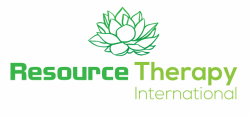Resource Therapy is a psychodynamic therapy. That means it sometimes focuses attention on the memories of incidents in order to attend to the cause of current issues.
Cognitive Behavioral Therapy focuses on reframing and behavioural homework, and does not attend to memories of the past. It attempts to lessen the impact of unwanted symptoms on the clients.
Attending to the Cause
Resource Therapists believe that attending to the cause is better than attempting to lessen the impact of the symptoms, because when the cause of an issue is attended to the symptom will disappear, plus the client will no longer carry the unresolved confusion from the past.
Working with the right part
Resource Therapists believe the personality is composed of parts and it is important to locate and attend precisely to the Resource State that has the issue. Working directly with the part that needs change is the most direct route to resolution. Continuing to spend time talking with another part is a waste of therapy time.
Understanding pathology
Resource Therapists learn there are 8 pathologies that underpin psychological distress. They learn precise treatment actions to attend to pathological states so each state can return to a normal condition.
Having the right tools
Resource Therapists have clear guidelines for working with issues that clients bring to therapy. It is important for Resource Therapists to learn the types of pathologies, and to learn the associated treatments in order to feel competent to handle the various issues presented by clients.
Learning Resource Therapy
Learning Resource Therapy is a process of learning about the formation and nature of Resource States, learning about the 8 pathological conditions states can have, learning the correct actions to attend to each condition, and learning how to apply those actions so pathological states can return to a normal condition.
Learning Resource Therapy is about learning to understand and directly address the issues clients present.
